
Home care helps seniors to live healthier and more productive lives as they age in place. Home care is provided by caregivers not trained or licensed as medical professionals. They are usually called home care aides who are trained in the nuances of senior care. Home care is classified as personal care or companion care and is considered “unskilled” or “non-clinical.” Home care aides provide “supportive” services, helping you to sustain and maintain your quality of life in your home as you start to lose functionality and mobility – keeping you safe and comfortable, while offering friendly companionship.
You generally will use home care when you reach the point that you:
1. Need assistance with activities of daily living.
2. Do not drive and need transportation.
3. Live alone and may be socially isolated and need companionship.
What General Categories of Services are Included in Home Care?
Home care is generally comprised of one or more of the following tasks involving activities of daily living (ADLs).
1. Meal preparation and delivery
2. House cleaning
3. Assisting with personal grooming
4. Helping you to move around and/or get in and out of your bed/chairs/tub/shower
5. Providing medication reminders
6. Helping you or your spouse/partner to cope with Alzheimer’s or dementia by grounding and orienting you or them
7. Running errands like grocery shopping, sending packages, and picking up prescriptions
8. Providing transportation
9. Helping with bill paying
10. Incontinence care
11. Toileting help
12. Companionship
As home care aides are helping clients with their day-to-day activities, they are available to work in short shifts a few times per week during waking hours, or around the clock, seven days per week.
Home care helps seniors to perform the basic and instrumental activities of daily living while aging in place, with the help, support, and companionship of dedicated home care aides.
What Tasks are Included in Home Care, and What Products and Equipment are Needed to Provide Home Care Services?
Providing home care is not a simple job. In addition to training, it requires stamina, strength, patience, good humor.
In performing their services, home care aides make use of a wide variety of products and equipment to perform their tasks. The nature of those products and equipment depends on the specific needs of the each senior under their care. The senior is responsible for providing most of the items used by home care aides in providing their services, either directly, or indirectly through the charge for the home care service. The following tables set forth an itemization of home care tasks, and some of the products and equipment that home care aides need in order to provide their services.
Meal Preparation and Delivery
|
Tasks Performed by Home Care Aides for Meal Preparation and Delivery
Home Care Aides can prepare nutritious meals that take into account dietary restrictions and preferences. This can help the senior maintain a healthier lifestyle, and reduces the chance of stomach problems and incontinence. Often the meal preparation and subsequent consumption can be jointly done by the senior and home care aide, providine an opportunities for companionship and shared efforts.

Home care helps seniors to eat better and more regularly. |
Items Needed by Home Care Aides for Meal Preparation and Delivery
- Meal preparation
- Cookware
- Thin plastic gloves
- Meal delivery – utensils, cups, plates, and protective clothing
- Adaptive and angled utensils
- High-sided and/or spill-proof plates and dishes
- Utensil padding grips
- Flow control cups, nosey cups, vacuum feeding cups, spill-proof lids, straws
- Adult bibs
- Lap bib slipover
- Meal delivery – surfaces and holders
- Overbed bedside table
- Wheelchair cupholders
|
House Cleaning
|
Tasks Performed by Home Care Aides for House Cleaning
House cleaning is an important home care task
It takes a lot of time and effort to keep a household clean. For seniors, it can take even longer. The strains of bending, reaching, lifting, scrubbing, and pushing around a vacuum can become too much. Home Care Aides can help by performing basic cleaning tasks like mopping floors, vacuuming, dusting, sweeping, doing the dishes, helping with the laundry, taking out the trash, and more.
- General cleaning:
- Dusting furniture, banisters, wall trim
- Sweeping or dusting floors
- Vacuuming
- Cleaning the kitchen:
- Scrubbing the sink and faucets
- Wiping down:
- Cabinets and countertops
- Grab Bars
- Walls, baseboards
- Appliances, inside and outside
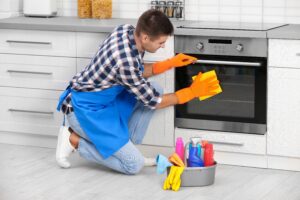
- Emptying and taking out trash
- Cleaning bathrooms:
- Scrubbing:
- Tub and faucet
- Shower stall, shower head, water pressure/temperature control
- Sink and faucets
- Toilet
- Bidet
- Wiping down:
- Cabinets, vanity, and countertops
- Grab Bars
- Walls, baseboards
- Mopping floor
- Putting out fresh linens:
- Towels, hand towels, wash clothes
- Bath Mats
- Replenishing supplies:
- Soap and shampoo
- Toilet paper and wipes
- Lotions
- Shaving supplies
- Hair care supplies
- Make-up
- Cleaning supplies
- Emptying and taking out trash
- Cleaning bedrooms:
- Beds:
- Putting on new bed linens
- Making beds
- Wiping down:
- Furniture
- Grab bars
- Walls, baseboards
- Emptying and taking out trash
- Cleaning the laundry room:
- Scrubbing sink and faucets
- Wiping down:
- Cabinets and countertops
- Grab bars
- Walls and baseboards
- Appliances
- Mopping floor
- Putting out fresh towels and mats
- Replenishing supplies:
- Laundry Detergent, bleach, and fabric softener
- Dryer anti-cling
- Starch
- Emptying and taking out trash
- Doing the laundry:
- Clothes
- Bedding
- Towels and Mats
- Protective Pads
Home care helps seniors to live in a cleaner and healthier environment. |
Items Used by Home Care Aides for House Cleaning
- Cleaning equipment:
- Vinyl gloves
- Buckets
- Mops
- Sponges, cloths
- Brooms, dustpans, dust-mops
- Vacuum cleaners
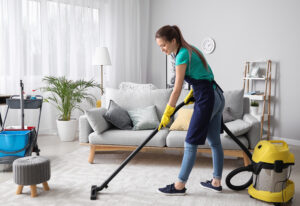
- Cleaning supplies and caddies:
- Cleaning sprays, liquids, powders
- Storage caddies
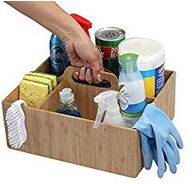
- Appliances:
- Dishwashers
- Clothing washers and dryers

|
Assisting with Personal Grooming
|
Tasks Performed by Home Care Aides to Assist with Personal Grooming
Assisting with personal grooming, such as bathing, washing hair, shaving legs and under arms, dental care, shaving face, applying make-up, and/or getting dressed, is an important Home Care task
Often the most difficult tasks for anyone looking after a senior involve helping them with basic hygiene needs. Home Care Aides provide personal grooming assistance with activities of daily living such as bathing, washing hair, toileting, and getting dressed.
- Bathing – In Tub or Shower
- Preparing the bathroom in advance
- Making the bathroom safe
- Assisting the senior into the tub or shower
- Helping the senior to wash
- Helping the senior feel in control
- Including the senior in the process
- Respecting the senior’s dignity
- Assisting the senior out of the tub or shower
- Helping the senior to dry
- Not worrying about the frequency of bathing
- Being gentle
- Being flexible
- Shaving Legs and Underarms
- Washing Hair:
- Making sure shampoo bottle is easily accessible
- Opening the lid of the shampoo bottle
- Working shampoo into hair
- Thoroughly rinsing shampoo from hair
- Performing like-kind procedures for conditioner if used
- Dry hair
- Dental Care
- Providing short, simple instructions
- Using a “watch me” or “hand-over-hand” technique
- Monitoring daily oral care
- Helping the senior to keep up with regular dental visits for as long as possible
- Shaving Face
- Applying Make-up
- Doing Hair
- Doing Fingernails
- Clipping Toenails
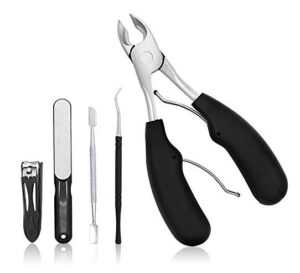
- Dressing
- Simplifying choices
- Organizing the process
- Choosing comfortable and simple clothing
- Being Flexible
Home care helps seniors to maintain better hygiene, look better, and feel better about themselves. |
Items for Home Care Aides to Assist with Personal Grooming
- Moving from room to room and in and out of showers
- Shower/Commode Mobile Chairs
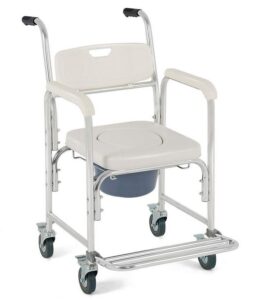
- Personal grooming
- Combs, brushes, make-up
- Shaving equipment and supplies
- Toenail and fingernail clippers and maintenance items
- Getting dressed
- Dressing sticks
- Long shoe horns
- Sock sliders
- Buttoning hooks
- Zipper pulls
- Hip/Knee replacement kit
- Extended reach gripping device
- Medical gloves
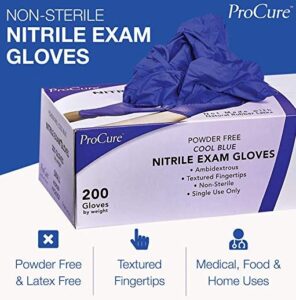
|
Helping You to Move Around and/or Get In and Out of Your Bed/Shower
|
Tasks Performed by Home Care Aides to Help to Move you Within Bed, In and Out of Bed, From Room to Room, In or Out of Chairs, and In and Out of Showers
Assisting with movement and mobility are important Home Care tasks.
- Home care aides provide assistance moving patients around while in bed to help prevent and alleviate bed sores and other ailments.
- Make use of Turning-Pads, Turning-Wedges, and other devices
- They help seniors get out of bed
- helping them to sit and stand up,
- transferring them to a mobile chair,
- lifting them out with a hydraulic or battery-powered lifting device.
- They can then help them to move to the bathroom
- For a shower or bath,
- For toileting, and/or
- for grooming tasks such as brushing teeth, shaving, make-up, and hair combing or brushing.
- The home care aide can also assist the senior to move throughout the house
- Walking on their own or with a cane or walker
- Being pushed in a wheelchair or other mobile chair, or
- On a scooter.
- Lifting with a hoist and moving
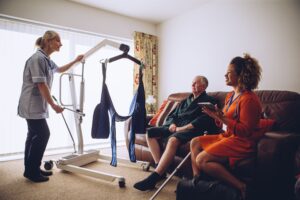
Home care helps seniors to remain more active and less isolated. |
Devices for Home Care Aide Help to Move you Within Bed, In and Out of Bed, From Room to Room, In or Out of Chairs, and In and Out of Showers
- Moving within bed:
- Turning-Pads, Turning-Wedges, and other Devices
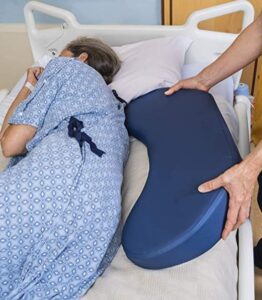
- Moving in and out of bed:
- Transfer Blankets
- Lifting Slings
- Hydraulic and battery powered lift equipment
- Gait Belts

- Moving from room to room:
- Wheelchairs
- Walkers
- Canes
- Stair lifts
- Ramps
- Moving in and out of chairs
- Seat lifts
- Lifting Slings
- Hydraulic and battery powered lift equipment
- Gait Belts
- Moving from room to room and in and out of showers
- Shower/Commode Mobile Chairs
|
Providing Medication Reminders
|
Tasks Performed by Home Care Aides to Assist with Medication Management
Assisting with medicine management is an important Home Care task.
Remembering to take medications at one or more specific times can be challenging for many seniors. A Home Care Aide can help to remind loved ones when it is time to take their medication, but cannot administer any type of medication. The home care aide can also report to home health care workers or to the senior’s doctor any noticeable change in the condition or behavior of the senior.
Home care helps seniors to follow the medicine plans prescribed by their doctors. |
Items for Home Care Aides to use to Assist with Medication Management
- Pill organizers and dispensers:
- Multi-day pill organizers
- Automatic pill dispensers
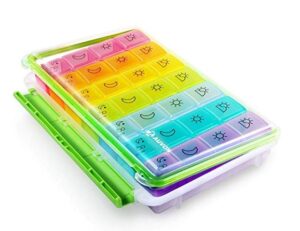
- Medication timers and reminders:
- Pill bottle timer caps
- Pill reminders
|
Helping You or Your Spouse/Partner to Cope With Alzheimer’s or Dimential by Grounding and Orienting You or Them
|
Tasks Performed by Home Care Aides to Help People Cope with Alzheimer’s or Dementia by Grounding and Orienting You or Them
Assisting with coping with Alzheimer’s or dementia by orienting and grounding the sufferer is an important Home Care task.
Home care aides provide supportive, compassionate, and friendly one-on-one interaction. Depending on the capabilities of the senior, they may spend time with them outdoors, going on walks, playing card games, cooking and sharing meals together, or simply having a conversation. This can be a great resource for those who may be feeling isolated or depressed, such as seniors experiencing the symptoms of Alzheimer’s or dementia.
For seniors with Alzheimer’s and dementia, the home care aide may need to provide extra help with certain activities of daily living. The Alzheimer’s Association notes the following key areas:
- Bathing:
- Preparing the bathroom in advance
- Making the bathroom safe
- Help the senior feel in control
- Including the senior in the process
- Respecting the senior’s dignity
- Not worrying about the frequency of bathing
- Being gentle
- Being flexible
- Dental Care:
- Providing short, simple instructions
- Using a “watch me” or “hand-over-hand” technique
- Monitoring daily oral care
- Helping the senior to keep up with regular dental visits for as long as possible
- Dressing:
- Simplifying choices
- Organizing the process
- Choosing comfortable and simple clothing
- Being Flexible
- Eating:
- Making mealtimes calm and comfortable
- Offering one food item at a time
- Encouraging independence
- Being alert to signs of choking
- Grooming:
- Continuing grooming routines
- Performing tasks alongside the senior
- Using safer, simpler grooming tools
- Toileting:
- Making sure clothing is easy to remove
- Removing obstacles
- Creating visible reminders
- Monitoring incontinence
- Considering incontinence products
- Being supportive
Home care helps seniors to feel less isolated and lonely, and to retain a greater sense of dignity when their mental facilities start to diminish. |
Items used by Home Care Aide to Help People Cope with Alzheimer’s or Dementia by Grounding and Orienting You or Them
- Grounding items:
- Painting sets

- Easy, relaxing puzzles
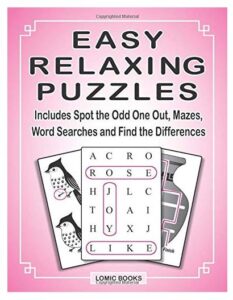
- Companion therapy dolls
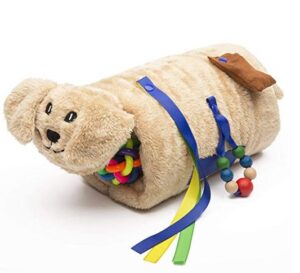
- Fidget and therapy pillows
- Activity aprons
- Memory loss label kits
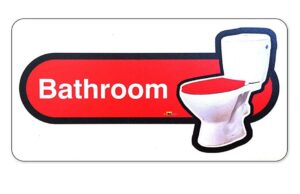
|
Running Errands, Like Grocery Shopping, Sending Packages, and Picking Up Prescriptions
|
Tasks Performed by Home Care Aides to Run Errands
Running errands for seniors is an important service that home care aides provide.
Sometimes it helps to have someone who can run routine or odd errands for you. Home care aides can help by carrying out errands for seniors, such as grocery shopping, sending packages, and picking up prescriptions.

Home care aides help seniors to get their errands done. |
Devices and services employed by Home Care Aides to Runn Errands
- Automobile or other vehicle
- Available public transportation systems
- Buses
- Commuter trains
- Special community ride services
- Account with a transportation service
- Taxi
- Uber, Lyft, or other
|
Providing Transportation
|
Tasks Performed by Home Care Aides to Provide or Arrange Transportation
Providing and arranging transportation is an important task for home care aides.
Many seniors no longer drive and need to rely on others for rides and/or for assistance with use of public transportation or car services. Home care aides are able to provide transportation to and from doctor’s appointments, shopping, meetings, events, religious activities, and other activities as needed.

Home care aides help seniors to stay more active and less isolated in the community. |
Devices and Services Used by Home Care Aides to Provide or Arrange for Transportation
- Automobile or ADA compliant vehicle
- Available public transportation systems
- Buses
- Commuter trains
- Special community ride services
- Account with a transportation service
- Taxi
- Uber, Lyft, or other
- Means to help the senior access the transportation
- Wheelchair
- Scooter
- Walker
- Cane
|
Helping With Bill Paying
|
Tasks Performed by Home Care Aides to Help with Bill Paying Tasks
Assisting with bill paying is an important task for home care aides.
Figuring out and paying bills can be confusing and challenging for seniors. This is especially true if their are multitudes of healthcare-related bills and insurance forms to sift through and decipher.
The tasks that home care aides perform vary, depending on the degree of assistance needed, and whether they have access to funds. If they have access to the senior’s funds, the home care aide should be have fidelity bond insurance.
Home care aides can assist the senior with the following bill paying tasks:
- Opening mail from creditors
- Sorting and categorizing bills
- Entering bills into personal accounting software
- Contacting vendors with questions about any products, services, amounts or other items
- Preparing checks for payment
- Obtaining or applying authorized signatures to checks
- Mailing checks
- Initiating electronic payments
- Checking each month’s statements from vendors for accurate charges and application of credits and payments
Home care aides help seniors to keep track of and pay their bills.
  
|
Items Used by Home Care Aides to Help with Bill Paying Tasks
- Electronics and software
- Personal computer and accessories
- Calculator/ten-key calculator
- Personal accounting software
- Password vault
- Office supplies
- File folders and hanging folders
- Writing utensils
- Fidelity bond insurance
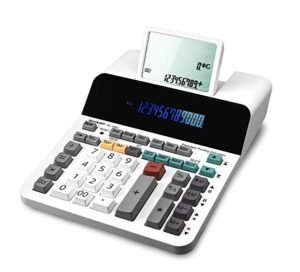
|
Incontinence Care
|
Tasks Performed by Home Care Aides to Provide or Assist with Incontinence Care
Assisting with incontinence care is an important function of home care aides.
The senior may have lost control over his or her bladder or bowel (incontinence.) Incontinence is not a normal part of aging or most illnesses. If incontinence develops, it is very important to ask the physician for a complete evaluation. Many causes of incontinence are treatable.
The home care aide can tailor their assistance to fit the needs and circumstances of the senior.
- If the senior needs help getting to the bathroom, the home care aide can:
- Suggest going to the bathroom on a frequent, scheduled basis. Rushing after the urge strikes will increase the chance of accidents. Every two hours is too often for most people; start with every three to four hours.
- Make sure the hallway and bathroom are well-lighted.
- Remove throw rugs, which could trip someone.
- Encourage the senior to install grab bars and/or use a raised toilet seat for more ease getting on and off the toilet.
- If The senior occasionally has accidents, the home care aide can:
- Remember that accidents are very embarrassing for the person.
- Stay calm and reassure her that it’s “okay.”
- Keep a matter-of-fact approach. “Let me help you get out of these wet things.”
- Monitor her for urinary tract infections. Any fever lasting more than twenty-four hours should be evaluated.
- If accidents occur regularly, the home care aide can:
- Assist the senior in seeing a doctor for a thorough evaluation and treatment recommendations.
- Establish a regular schedule for using the toilet.
- Tailor the senior’s diet to avoid caffeine, alcohol, citrus juice or other bladder irritants.
- Offer six to eight glasses of fluids every day to prevent strong urine that can irritate the bladder.
- Find out if the senior is taking any medications that affect the bladder. Common over-the-counter products like aspirin and Excedrine contain caffeine, which stimulates the bladder. A few high blood pressure medications can irritate the bladder.
- Be aware that incontinence can be a trigger for skin breakdown and pay special attention to skin care.
- To Help the senior to avoid constipation, the home care aide can:
- Offer foods high in fiber such as fruits, nuts, beans, vegetables, bran and most cereals. Add high fiber foods gradually if the person isn’t used to them.
- Make sure there is adequate liquid in the diet; 6–8 classes of liquid each day are recommended (unless otherwise instructed by the physician).
- Encourage daily exercise to stimulate bowel activity.
Home care helps seniors to better deal with incontinence and find ways to lessen its recurrence and impact. |
Items Used by Home Care Aides to Provide or Assist with Incontinence Care
- Absorbent and waterproof furniture pads and covers
- Waterproof bed pads
- Absorbent bed pads
- Waterproof saddle pads
- Chair/seat protector pads
- Absorbent dry-pads
- Mattress pad protectors
- Personally worn pads, guards, absorbent undergarments, and waterproof clothing
- Incontinence pads and guards
- Absorbent underpants
- Waterproof pull on pants
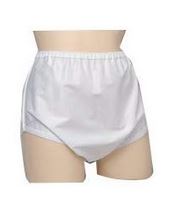
- Incontinence-Related Devices
- Penile clamps
- Bladder supports
- Personal cleansing wipes
- Portable urinals
- Portable commodes
- Bedpans
- Vinyl gloves
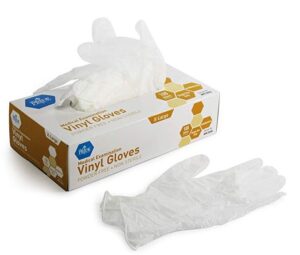
- Cleaning products and skin care
- Perineal/skin cleansers
|
Toileting Help
|
Tasks Performed by Home Care Aides to Provide Toileting Help
Home care aides provide toileting help to seniors who have difficulty gettng to the toilet, undoing and reattaching clothing, sitting down and standing up, and cleaning up after themselves.
The senior may need help using the toilet.
- When the bathroom cannot be reached:
- Putting in place bedpan, commode, portable urinal
- Assisting the senior in using the commode
- Emptying and cleaning the bedpan, commode, and/or portable urinal
- General preparations for use of the bathroom:
- Making sure clothing is easy to remove
- Removing obstacles
- Lining floors with plastic runners where accidents are frequent
- Lining areas around toilets with disposable or washable linens
- Keeping a generous supply of toilet paper, wipes, and cleaning supplies on hand
- Preparations for each time toileting occurs:
- Adding or removing toilet seat riser
- Rolling senior on shower/commode mobile chair over toilet
- Assisting the senior walking to and from the bathroom
- Transferring the senior from a wheelchair to the toilet seat
- Assistance with sitting down and standing
- Making sure toilet seat is appropriately either in the up or down position
- Making sure grab bars are property aligned
- Physically assisting the senior with sitting down or standing up
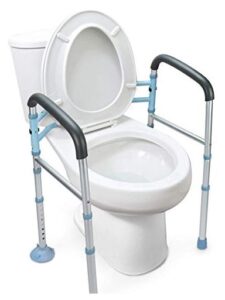
Home care helps seniors to more safely and easily perform daily toileting activities as age starts to impact strength, balance, and the ability to easily work with buttons, zippers, belts, and other fasteners. |
Devices Employed by Home Care Aides to Provide Toileting Help,/p.
- Movement to and from toilet and placement on or over toilet:
- Shower/Commode Mobile Chairs
- Toileting lift sling
- Hydraulic and battery powered lift equipment
- Toilet and Toilet Seat:
- Standard, ADA height, or extra high toilets
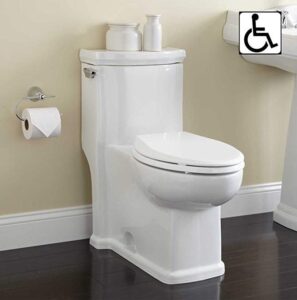
- Toilet elevators
- Toilet seat risers
- Toilet Grab Bars:
- Wrap-around toilet grab bars
- Wall-mount grab-bars
- Clean-up aids:
- Toilet wiping aids
- Cleansing wipes
- Medical gloves
|
Companionship
|
Tasks Performed by Home Care Aides to Provide Companionship
Providing companionship is an important role for home care aides.
Loneliness is a significant issue for seniors. Friends and family are often too busy, live far away, or may otherwise no longer be in the senior’s life. Having someone to talk and interact with is extremely important, and even more so when the senior’s ability to venture outside of the house is limited.
Home care aides are able to spend time just to give some much-needed companionship. They will Engage with you in:
- Socialization,
- Cards and other games,
- Crafts, and
- Other purposeful activities.

Home care helps seniors to battle loneliness and provide activities and companionship for seniors. |
Items Used by Home Care Aides in Providing Companionship
- Books
- Games and Playing Cards
- Music
- Crafts
|
Qualities to Look for in A Home Care Aide
Just as you would look at the qualifications and type of caregiver to hire, there are certain traits that they should have if this entire arrangement is to work the way you want it to. Here are some of the best qualities to look for in a care worker:
- Patience: Aging is not for sissies. There will be challenges. You need someone who is patient and caring because sometimes there will be frustrating moments for both of you.
- Punctuality: Much of your day will be planned around the care your Home Care Aide will provide. Being on time is a key trait they should have
- Ability to Learn Quickly: Your Home Care Aide needs to learn your individual needs and preferences to better assist you. The quicker they are able to do it, the better for the both of you to get along
- A Good Listener: Repeating oneself is annoying. You need a Home Care Aide who will listen to you and process what you say.
- Willing to Give Extra Effort: You need someone who will be willing to give extra effort when you need them to do so.
- Responsibility: The home care arrangement depends on both parties responsibly keeping to a set schedule, especially when it comes to maintaining a diet and taking medication.
To give you some idea of the types of products and equipment that are available to assist in Home Care tasks, shown below are examples of products and equipment offered on Amazon and other reputable retailers’ sites. Click the picture of the item or the “Buy Now” button below the description to read more about each item shown.
Note: Despite the name, the “Buy Now” button does not commit you to buy. It is just a link to information. If you happen to choose to buy any item you see below, or any other item you see while on the Amazon site, you can, of course, but will need to enter payment-method information in order to complete a purchase. So browse and research without worry that you are committing to buy anything by clicking a Buy Now button below.
Below are some higher consumer-rated shower/commode mobile chairs that may assist with Personal Grooming, Mobility, and Toileting tasks.
LHONE Medical Shower Chair Padded Seat with Wheels Rolling Shower Chair with Drop Arms Locking Wheels Commode Padded Backrest and Seat
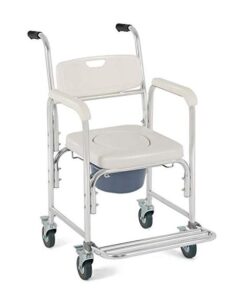
4-in-1 Multi-Function Wheelchair
This shower chair is the perfect for solution for homecare and long term care residential showering.
It offers portability, privacy, and independence for the elderly and disabled. The chair also features a convenient commode opening for easy toileting. With a robust aluminum frame, PU padded seat and plastic backrest, detachable bucket and seat, and four waterproof castors with rear brakes, this accessibility chairs are designed to improve quality of life for people with mobility limitations.
- – PADDED BACKREST AND SEAT : Both commode seat and back are waterproof and fully padded, and are made of vinyl material that is easy to clean it allows for longer showering time. Comes with a removable commode bucket and lid.
- – DURABLE AND LIGHTWEIGHT : Shower commode chair is made from aluminum, which is durable and lightweight. Easy to assemble.
- – ROLLING COMMODE : All 4 wheels come standard with locking brakes. Thanks to durable large wheels, the shower chair moves easily over carpets, bathroom and different types of flooring.
- – EXTRA COMFORT : This medical shower chair with arms comes with a convenient footrest for added comfort. The armrests are padded for added comfort.
- – MULTIPLE USES : This medical bedside commode works, fits over a standard toilet. This shower chair with wheels enables you to perform multiple transfers.
|
Nurth 4 in 1 Chair Shower Commode Mobile Chair Commode/Shower Wheelchair Padded Toilet Seat Shower Transport Chair with 4 Brakes, Removable Pedal, Adjustable armrest, PU Commode Seat and Pail 220lb
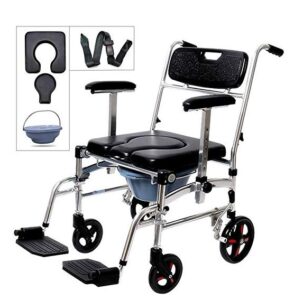
Are you looking for the ideal commode/ Toilet stool/?
● This 4-in-1 commode/shower chair/Wheelchair — Aluminum Shower Commode Wheelchair is perfect for people who need a commode but also want the convenience of a wheelchair for easy transportation and mobility.
● The rear wheels allow the user to propel themselves while seated. The seat cut-out provides comfort and allows the chair to be positioned over a standard toilet for use, but also comes with a bucket to be used anywhere it is required.
● The aluminum frame of the Shower Commode Chair is resistant to rust which makes it ideal for the shower.
● Footrests come standard and include adjustable height and angle footplates. The Aluminum Shower Commode Chair is ideal for anyone who is looking for a shower chair and commode for their home.
- – MULTI-USE 4-in-1 — commode/shower chair/chair /Wheelchair can be used anywhere as a standalone commode thanks to the included pail. Can also be used directly over a toilet for safer toileting or as a safe and comfortable shower chair.
- – SAFER, CLEANER DESIGN — WORKS GREAT AS A PADDED COMMODE CHAIR as it fits over a standard toilet, which enables you to easily perform multiple transfers. Seat height is 20 inches, Seat Width 16.5 inches, Total Height 31.5 inches. unlike old style white/gray chairs that blend into the backgound. Especially Helpful for Dementia and Visually Impaired Users to Help Prevent Slips, Trips and Falls; the Leading Cause of Death by Injury in People Over 65.
- – EASILY MOVE ACROSS FLOORS AND THICK CARPETS with large — durable wheels, along with rear locking wheels to set it in place. Weighs only 26 pounds and supports up to 220 pounds.
- – High Quaity MEDICAL GRADE — Aluminum Frame Will Never Rust. Institutional Quality for Reliability, Durability and Safety. LIFETIME WARRANTY. PADDED SEAT, ADJUSTABLE ARMRESTS AND BACK Provide Comfortable, Warm-to-the-Touch Seating and Minimzes the Risk of Skin Tears and Subsequent Infections.
- – 100% SATISFIED – If you are not happy with your buying experience, simply contact us and tell us what we can do to solve the problem! If the product fails to meet your expectations or is not as described, we will replace the item(s) or give you 100% of your money back.
|
Rolling Shower Chair with Drop Arms, Antimicrobial Mesh Seat, Locking Casters, Seat Belt, Slide Out Footrest and Commode Pail. 300 lb. Capacity, Fits Over Standard Toilet.
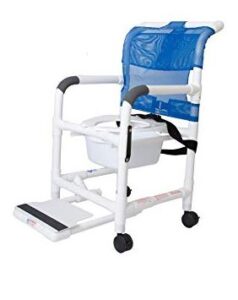
Product Description
Drop Arms and Footrest Slides in for Easy Access. 4 Locking Casters. 300 lb. Capacity, Seat Dimensions: 40.5″ Height x 22″ Width x 25.25″ Depth. Seatbelt and Removable Commode Pail.Medical Grade PVC with an Antimicrobial Mesh Seat. 30 Day Return Policy
- – DROP ARMS AND FOOTREST SlIDES IN for Easy Access. 30 Day Return Policy.
- – 4 LOCKING CASTERS
- – ROLLS OVER Standard Size Toilet.
- – 300 LB. Capacity, Seat Dimensions: 40.5″ Height x 22″ Width x 25.25″ Depth.
- – SEATBELT and Removable Commode Pail.
- – MEDICAL GRADE PVC with an Antimicrobial Mesh Seat.
|
Below are some higher consumer-rated Gait Belts, Bed Pads, and Lift Pads and Equipment that may assist with Moving Around from room to room, repositioning on beds, and Moving On and Off beds and chairs.
Dr. Moe’s Solutions Gait Belt – Redesigned by a Physical Therapist – Gait Belts For Seniors – PT Belt – Gait Belts Transfer Belts – Gait Belt With Handles
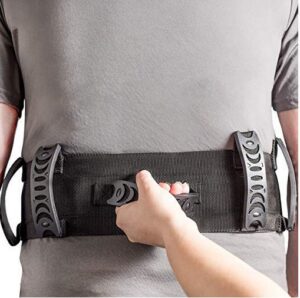
Product Description
Caregivers understand how challenging caring for a loved one or a patient can be. This 2 in 1 Transfer belt and Gait Belt was redesigned by a Physical Therapist with many years of clinical experience to make patient care just a bit easier. We carefully studied the competition, tested our product in the field, and came up with a product we know you will enjoy and use for a long time.
This Gait Belt and Transfer Belt is made with extra strong premium materials to ensure the safety of both the patient and caregiver. Handles were placed strategically to maximize the leverage of the caregiver for maximum patient control. The handles are wipeable to ensure sanitary conditions – perfect for home, hospital or nursing home use.
Buy our product with confidence. Purchase our product knowing it was made to be both safe and effective. This product was created for you, our beloved caregivers, with pride by a family owned American company. We stand by our product, and offer a full refund if you are not satisfied.
- – REDESIGNED BY A PHYSICAL THERAPIST – Gait belt was designed for the safety of both the patient and caregiver.
- – SURE GRIP RUBBERIZED HANDLES – Handles are placed strategically to give the caregiver maximum leverage and control over the patient – others are not built that attention to detail. Handles are wipeable to ensure sanitary conditions making this product perfect for home, hospital or nursing home use..
- – QUICK RELEASE BUCKLE – Transfer Belt features a quick release buckle that can quickly be secured and removed from the patient. A must in busy healthcare settings.
- – MADE OF DURABLE MATERIALS – Gait belt made of extra premium nylon webbing with reinforced stitching that guarantees a product that will hold up to the rigors of patient care.
- – DR. MOE’S GUARANTEE – This Gait Belt with handles was created for you my fellow caregivers by a family run. American company – and to be durable by a clinician who understands patient care from many years of practice. If for any reason you are not satisfied with our product we will offer a prompt refund. That is our confidence in the effectiveness and workmanship of our product.
|
Secure STWB-70A Padded Transfer and Walking Gait Belt with Caregiver Hand Grips and Quick Release Auto Style Buckle – Medical Nursing Patient Assist Aid (70″L x 4″W, Blue Handle (Auto Style Buckle))
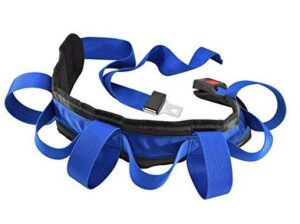
Product description
Size:70″L x 4″W, Blue Handle w/Push Button Buckle)
The Secure by Personal Safety Corp. Transfer and Walking Belt is an essential caregiver aid that assists in safe patient transfers and ambulation, and helps prevent caregiver back injury.
The four inch back section is wider than traditional gait belts allowing for greater contact area with the patient. Four vertical and three horizontal hand grips allow the caregiver to choose the best leverage point to safely handle a patient, resident or loved one.
Our belt is expertly crafted from heavy duty, soft nylon material with reinforced stitching and durable auto style buckle. We offer only the highest quality gait belts to our valued customers.
Fits waist sizes 28″ to 60″
Belt Dimensions: 70″L x 4″W
- – ESSENTIAL AND EFFECTIVE CAREGIVER AID that helps with safe patient transfers, walking, and ambulation – Made of durable nylon material with ultra strong reinforced stitching that is guaranteed withstand the rigors of daily use
- – SOFT PADDED for increased patient comfort – Quick release auto style buckle allows belt to be attached and detached with the push of a bUttOn
- – FEATURES four vertical and three horizontal handles which allow the caregiver to choose the most effective leverage point to safely handle a patient, resident or loved one
- – FITS WAIST SIZES 28″ to 48″ – Belt Dimensions: 52″ x 4″ – Covered by a one year full-replacement guarantee and exceptional customer service
- – PLACE YOUR TRUST in Secure by Personal Safety Corporation, the brand used by over 7000 health care facilities across the US, Canada and Europe since 1991
|
Secure SGBM-60S Patient Transfer and Walking Gait Belt with Metal Buckle and Belt Loop Holder for Caregiver, Nurse, Therapist, etc. (60″ x 2″ (Beige/Striped))
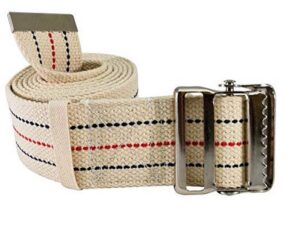
Your safety is our business
The Secure SGBM-60S gait belt with High Tensile Metal Buckle is an essential and effective transfer aid that is designed to help the caregiver safely assist a fall risk patient during transfers or when walking
Soft & Comfortable 100% Cotton webbing belt construction is designed to withstand the rigors of daily use in a professional healthcare environment
Quick release high tensile metal buckle mechanism is extremely durable and allows the caregiver to attach and detach the gait belt with quickness and ease
Makes transferring patients from beds, chairs and wheelchairs simple – Perfect for caregivers, nurses, therapists at home, hospital, LTC facility, etc.
Helps prevent caregiver injury to back, neck, hips, etc.
Easy to keep clean and sanitary for long-term daily use – Can be machine laundered and dried
Secure by Personal Safety Corporation–The brand trusted by thousands of professional care facilities across the globe since 1991
– SECURE by Personal Safety Corporation 60 inch by 2 inch gait belt designed to aid in walking or transferring fall risk patients, residents and loved ones – Also helps prevent caregiver injury
– ADJUSTABLE up to 60″ length and features handy loop to hold excess belt length
– HIGH TENSILE METAL BUCKLE provides a secure closure and allows for the caregiver to quickly put on and remove the belt from the patient or loved one
– 100% Cotton webbing construction is durable and comfortable for every day use
– MACHINE WASH AND DRY at high temperature setting for infection control purposes – Weight capacity: 350 lbs. – Covered by Personal Safety Corporation’s one year full-replacement warranty – Optional hand support loops available (Search ASIN: B00A7AMDJO)
|
Jewell Nursing Solutions Bed Sore Rescue Turning Wedge for Patients – Positioning Hospital Pad with Contoured Sacral Coccyx Area and Pressure Distribution Layered Foam to Deter Bed Sores

Product Description
Remove the pressure of pressure ulcer treatment
Pressure ulcers cause suffering to countless patients yearly, with treatments costing up to $12,000 per month, per ulcer. The Bed Sore Rescue Wedge offers a revolutionary approach to patient positioning with its patent-pending bilaterally symmetrical angles and contoured sacral / coccyx area. With high-efficiency layered foam construction for pressure distribution and ergonomic support to prevent spinal twisting, The Bed Sore Rescue wedge decreases the cost of pressure ulcers and helps preserve quality of care.
We care about every patient
The Bed Sore Rescue wedge is designed to reduce patients’ susceptibility to pressure ulcers as it can minimize skin interface pressure to any of the body’s extremities, from head to toe. Engineered to meet the 30-degree tilt position recommended by the National Pressure Ulcer Advisory Panel, it offers effective support even during head-of-bed elevation. High-density foam works to prevent pressure ulcers from forming, and it boasts a special contouring that helps to evenly distribute weight and protect the tailbone from touching the sitting surface.
Pressure ulcer treatment has never been easier
A moisture-proof cover makes The Bed Sore Rescue turning wedge suitable for multi-patient use, requiring no laundering and wiping clean with disinfectant and a cloth. The vapor-permeable cover promotes micro-climate control, helping to maintain optimal skin temperature and moisture balance while ensuring patient comfort.
- – PREVENT PRESSURE INJURIES while maintaining trunk stabilization with The Bed Sore Rescue Turning Wedge by Jewell Nursing Solutions. The Bed Sore Rescue Wedge follows the 30 degree tilt position recommendation of the National Pressure Ulcer Advisory Panel.
- – HIGH-EFFICIENCY LAYERED FOAM optimizes pressure distribution. Engineered to provide extremely low skin interface pressure, the high-density foam deters formation of pressure ulcers for greater comfort of patients in long-term care facilities.
- – NO-SLIP DESIGN features our patent-pending bilaterally symmetrical angles and contoured edges for superior comfort and control. The only one of its kind, this ergonomically correct support under back and hips prevents spinal twisting.
- – INTELLIGENTLY CONTOURED to avoid direct contact with the sacral / coccyx area, The Backbone Turning Wedge takes the pressure off of the spine, helps distribute weight evenly, and protects the tailbone from touching the sitting surface.
- – MOISTURE-PROOF COVER is vapor-permeable to enhance microclimate control and maximize hygiene. Because it wipes clean with a disinfectant towelette, The Backbone Turning Wedge is easy to maintain and suitable for multi-patient use
|
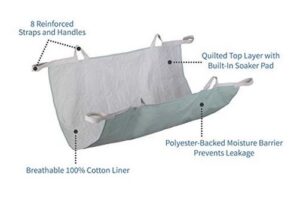
The Original TOMI TURN Patient Turning and Safety Device
Turning bedridden patients is easier than ever with the Tomi Turn. Designed to prevent injury to the patient and the caregiver, it’s washable, reusable, and can be maneuvered by one person. The quality of the material and the easy-to-use handles makes Tomi Turn an essential tool for caregivers everywhere.
Used by thousands of home health, hospice and in-home patient caregivers
Enables one caregiver to turn a patient easily and gently, from side to side and up in bed without injury to the patient or caregiver
Allows for easy transition of patients, ergonomically distributing the weight for best results when dealing with thin skin
Prevents bedsores and pneumonia
Designed and crafted with passion and care – It’s personal
Size: X-Large
- – ONE CAREGIVER can easily TURN a patient over SLIDE and PULL up in bed
- – SOFT QUILTED BED PAD, with BUILT-IN SOAKER, allows for COMFORT and PREVENTS bedsores and pneumonia
- – ABSORBS liquids with a WATER PROOF UNDER-LAYER
- – DURABLE, WASHABLE, and REUSABLE for YEARS, Supports OVER 300 lbs
- – 8 REINFORCED HANDLED PATIENT TURNER, for caregiver and patient safety
|
Multipurpose 55” x 36” Positioning Bed Pad with Reinforced Handles by ZHEEYI – Reusable & Washable Patient Sheet for Turning, Lifting & Repositioning – Double-Sided Nylon Fabric, Black
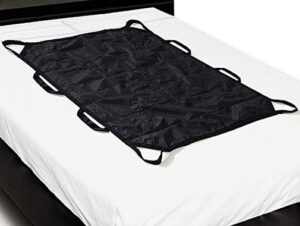
Here’s How You Can Make Sure That Your Loved Ones & Patients Are Comfortable All The Time!
If you are looking for a practical, convenient and comfortable nylon patient positioning bed sheet that will make turning, transferring and re-positioning your loved ones easier, you should look no further! Presenting The ZHEEYI Premium 55” x 36” Nylon Positioning Bed Pad!
Now you don’t have to struggle or strain your back in order to transfer or reposition your patients thanks to our heavy-duty patient sheet, which is designed to help save your effort and protect your patients from accidents!
Because You Want To Make Transferring Your Patients As Hassle-Free And Painless As Possible – the ZHEEYI exclusive heavy-duty patient pad is ideal for transferring patients from the bed to the stretcher and vice versa. By using our handy patient sheet you can minimize strain on your back, eliminate patient discomfort and prevent accidents.
Unlike all those low-quality bed sheets, our patient positioning pad is:
STURDIER – made by double-sided nylon
MORE ERGONOMIC with 8 reinforced handles
MORE PRACTICAL thanks to its waterproof fabric
MORE COMFORTABLE, breathable and lightweight
LARGER – the 55” x 36” size will make transferring easier
- – HELP YOUR LOVED ONES SIT UP & MOVE WITH CONFIDENCE with the ZHEEYI innovative patient positioning bed pad. This practical and ergonomic bed sheet will help you take care of your patients or loved ones who are hospitalized without the slightest discomfort.
- – TURNING, REPOSITIONING & LIFTING MADE EASY! Our double-sided nylon fabric patient sheet is equipped with 8 heavy-duty, reinforced handles that will help you transfer, reposition, turn or lift any patient with relative ease.
- – NEED A WATERPROOF & REUSABLE PATIENT SHEET? Unlike all those cheaply-made patient sheets, the ZHEEYI pad is made from lightweight nylon fabric, which is not only breathable, but also waterproof (nylon fabric is waterproof, nylon webbing is not waterproof). As a result, in an emergency, you can protect your sheets in case of any accidents.
- – DISCOVER THE MOM-APPROVED PATIENT SHEET! Maintaining the ZHEEYI 55” x 36” bed sheet for patients is a breeze, since it’s 100% machine-washable. All you have to do is slip it in your washing machine, tumble dry and reuse!
- – GET YOUR PREMIUM PATIENT POSITIONING BED PAD NOW 100% RISK-FREE! In the improbable case that you are not 100% satisfied with your reliable and versatile patient turning sheet, we promise to offer you a prompt and full refund. No questions asked! What are you waiting for?
|
Return to Chapter 6 page.




































